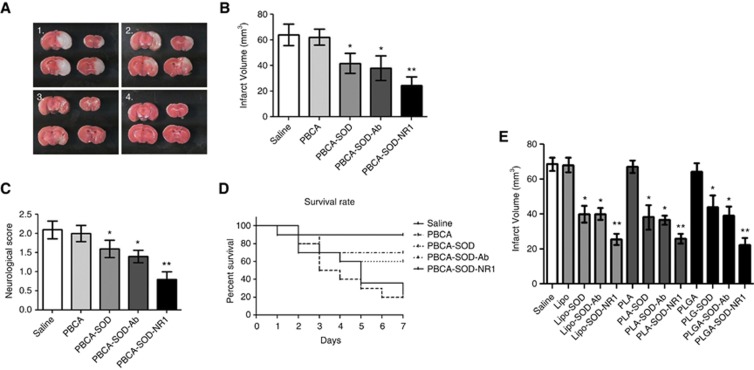Figure 4.
Effect of nanoparticles on infarct volume, neurologic score, and survival rate in mice subjected to ischemia and reperfusion injury (IRI). Mice were subjected to 1 hour ischemia and 24 hours of reperfusion with treatment of PCBA particles immediately after ischemia. (A) Brains stained with triphenyltetrazolium chloride (TTC) after IRI for infarct volume. 1. PBCA; 2. PBCA-SOD; 3. PBCA-SOD-Ab; 4. PBCA-SOD-NR1. (B) Quantification of infarct volumes from animals in (A). (C) Neurologic score from IRI mice at 22 hours after reperfusion and treatment. (D) Percent survival of mice after IRI and nanoparticle treatment. Saline or PBCA-treated mice were followed for up to 7 days after treatment. N=10 per group. *P<0.05; **P<0.01. (E) Mice were subjected to 1 hour ischemia and 24 hours of reperfusion. Immediately after ischemia, animals were administered nanoparticles and infarct volumes determined at 24 hours. N=10 per group. *P<0.01; **P<0.01 compared with SOD and SOD-Ab for each group. Lipo, liposomes; PLA, polylactic acid; PLGA, poly (lactic-co-glycolic acid). Ab, non-specific antibody; NMDA receptor antibody; NR-1, NMDA, N-methyl-𝒟-aspartate; PBCA, polybutylcyanoacrylate; SOD, superoxide dismutase.

